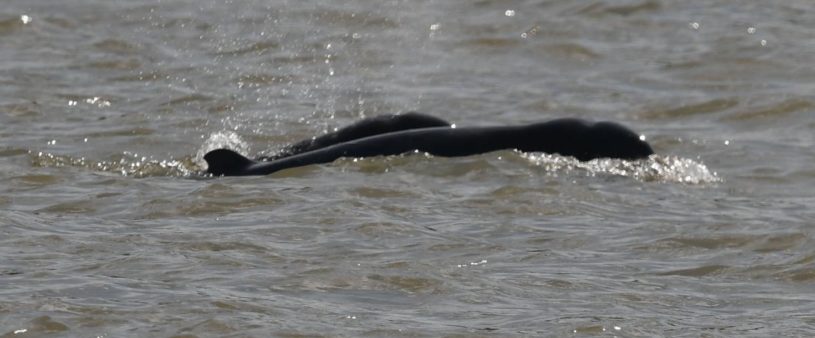The Irrawaddy River is home to the endangered Irrawaddy dolphin, found just north of Mandalay. What’s unique about Burma’s (Myanmar) Irrawaddy dolphins is their relationship with local fishermen. Dolphins and fishermen communicate and fish together, a practice called “cooperative fishing”–a unique phenomenon found in only two other places in the world.
Taking this Irrawaddy Dolphin Watching trip in the hottest month in Myanmar turned out to be a great idea. As a group of 4 we opted for the 2 days/ 1 night trip and enjoyed the cooling breeze and beautiful scenery as we slowly made our way up the river.
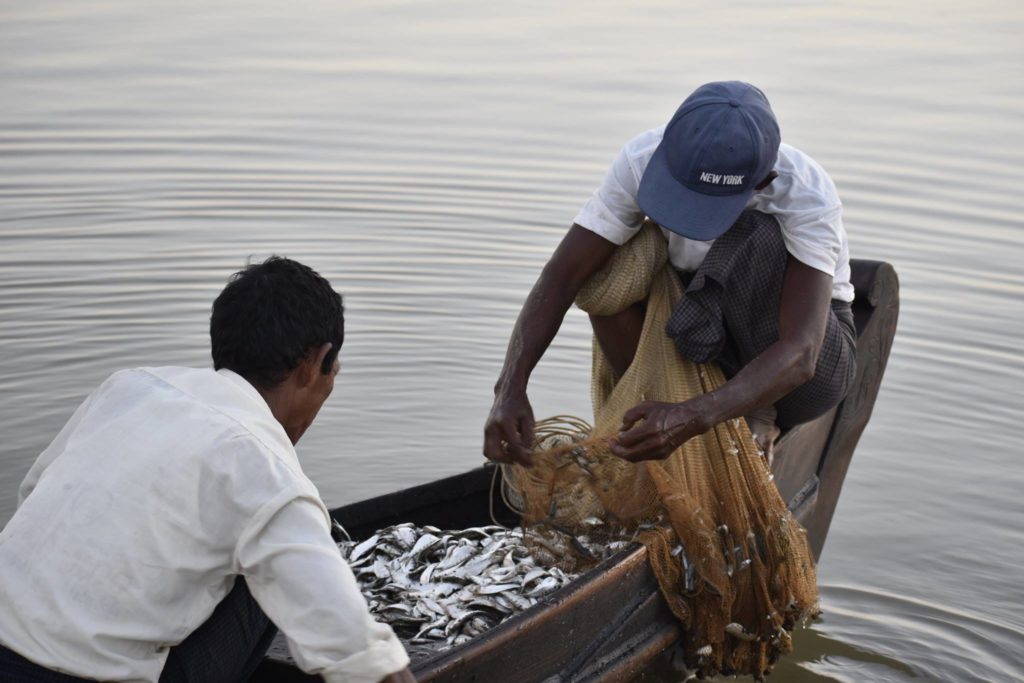
What is an Irrawaddy Dolphin?
Irrawaddy dolphins (Orcaella brevirostris) are an oceanic dolphin named after the Irrawaddy (Ayeyawaddy) River and are one of the world’s five species of dolphins that live in rivers. They have a grey body, a blunt forehead and nose, unlike the other oceanic dolphins, and can live up to 50 years. They use echolocation (sound) to hunt fish and communicate together. Irrawaddy dolphins are endangered and have an estimated total population of 7,100. They are found in only three rivers today, and there are less than 70 individuals left in the Irrawaddy River in Myanmar, where they are critically endangered.
What’s endangering Irrawaddy Dolphins?
• Shock by electrofishing
• Entanglement in gill nets or drift nets put across the river
• Lack of food as a result of over-fishing
• Pollution from mining and other industry
• Noise disturbance from large boats
• Less habitat from soil erosion
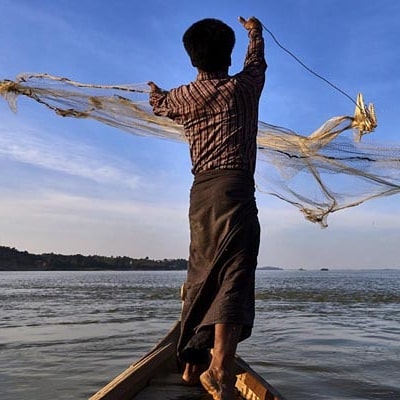
What is cooperative fishing?
Communication via calls and signals is made by both dolphins and fishermen, with the dolphins rearing schools of fish towards the cast net fishing boats and signalling to the fishermen to throw their nets when the fish near close to the boat. Only a handful of fishermen still practice cooperative fishing with dolphins these days. Communicating with dolphins and coordinating the throw with their signals takes years of skill and trust building with dolphins. The tradition is dying, as modern fishing practices and economics take over. Illegal electrofishing is also breaking down the trust between dolphins and fishermen, as dolphins are sometimes shocked and killed.
Ayeyawady Dolphin Protected Area
Myanmar’s Ayeyawady Dolphin Protected Area is the only place where you can see both Irrawaddy dolphins and the cooperative fishing tradition. It was the country’s first aquatic protected area, established in 2005, stretches for 74 km and has approximately 25 dolphins in the area. It is best visited from Mandalay on an overnight boat trip for 2 or 3 days in order to maximise your chances of spotting dolphins and having ample time to witness cooperative fishing in action. There are seven cooperative fishing villages that can be visited along the way that still maintain traditional culture, as well as other attractions such the 126 species of birds of the Upper Ayeyawaddy.
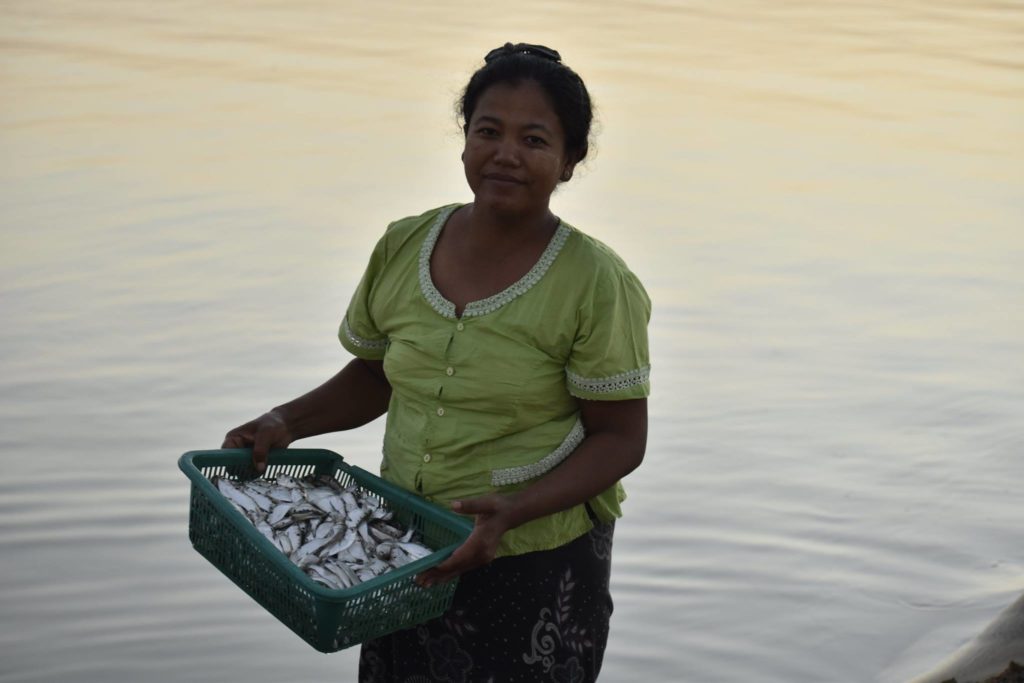
How Your Visit Helps
• Generates income for cooperative fishermen and their families
• Creates incentives for dolphin protection
• Raises awareness to protect dolphins & cooperative fishing
• Proceeds from the project’s revenue (5%) and donations by visitors help with community development
Spending 2 days 1 night on the river with Living Irrawaddy Dolphin Project was the best decision we made in Mandalay. The most amazing thing about this trip was not only seeing dolphins, but also learning about the unique relationship between local fishermen and dolphins. Cooperative fishing with wild dolphins doesn’t exist anywhere on earth but this part of the Irrawaddy River. One of the fishermen even told us a beautiful folktale about their relationship with dolphins.
Another thing we really enjoyed on this trip is we got to interact with the villagers. They showed us how to apply thanaka, how to wear longyi (traditional men’s sarong), how to throw a net, etc. It was a lot of fun! Food (cooked by the villagers) was very good and vegetarian friendly.
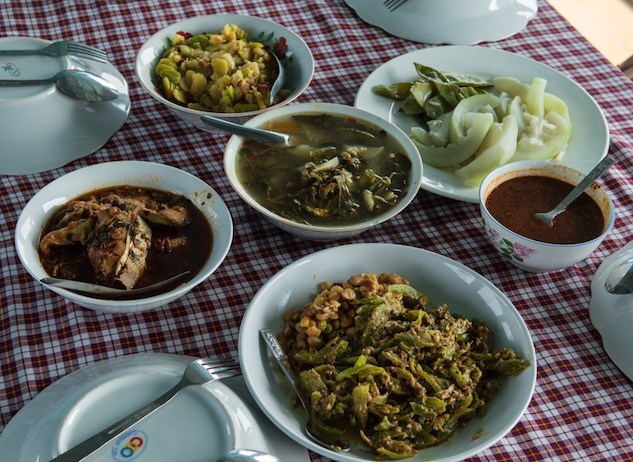
The moments on the boat from village to village were very relaxing too. I would love to try it again and would recommend it to anyone looking for a very authentic experience interested in getting to know life in rural Myanmar.
Your visit helps raise awareness for dolphin protection and generates income for local fishermen to continue their practice of cooperative fishing with dolphins. This is a social business. They are neither an NGO nor a strictly for-profit company.They use business to create benefits for communities and conservation. This project is an initiative of Living Irrawaddy Travel, a small local travel company.The Living Irrawaddy Dolphin Project is an initiative of Living Irrawaddy Travel and works with 6 communities to help them develop and market community-based ecotourism.
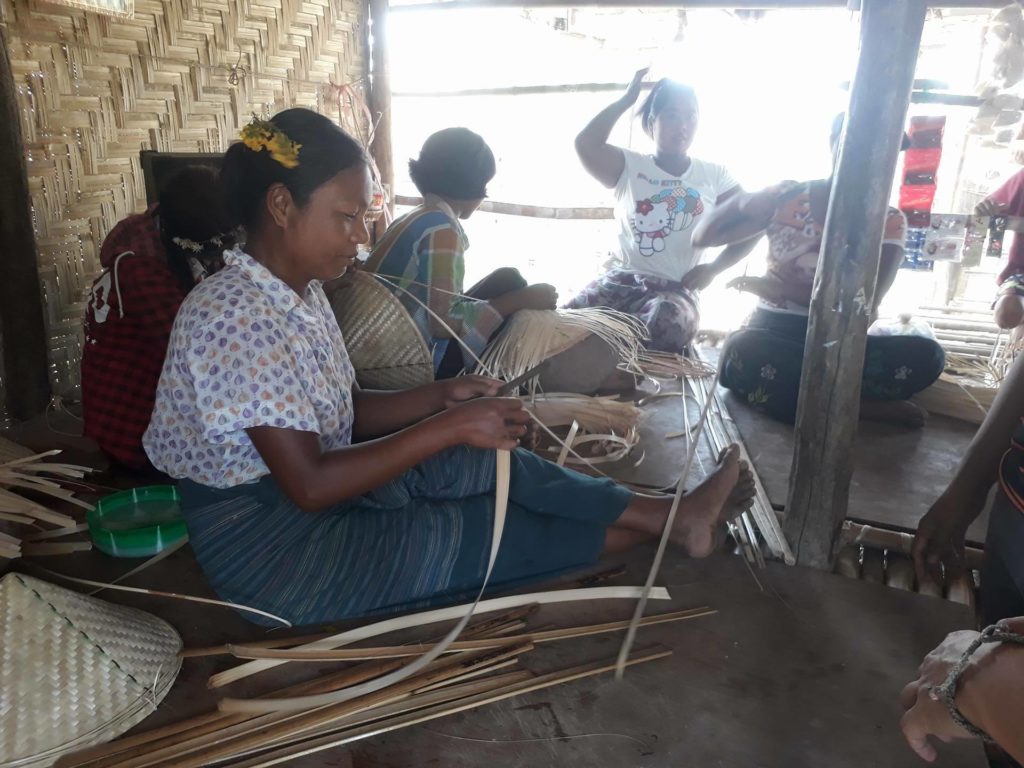
For your visit, you can get more detail information at info@hotelredcanal.com.







